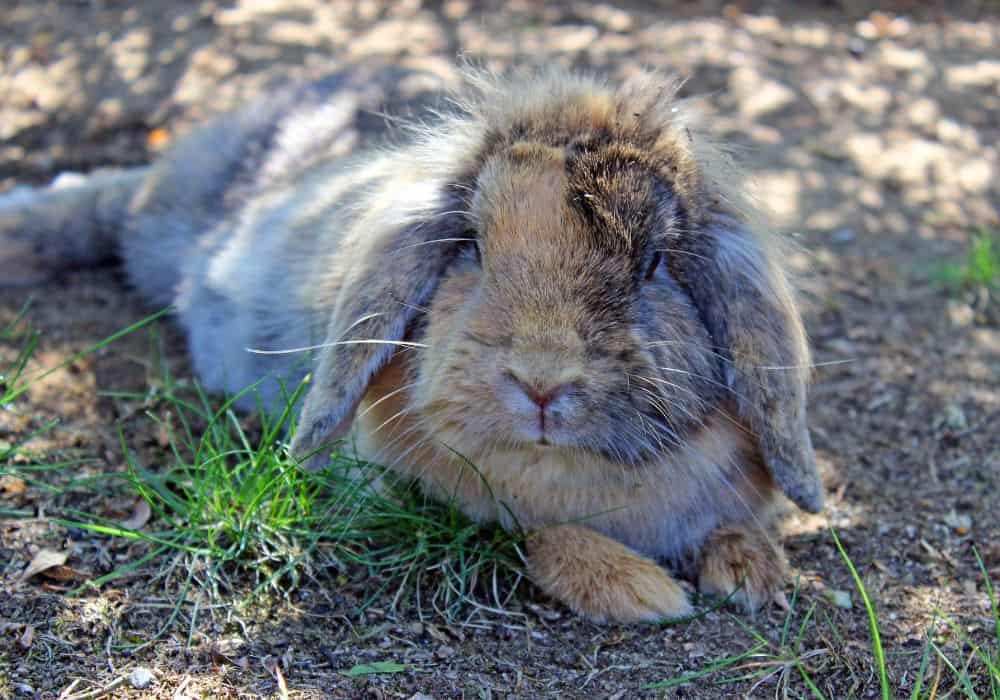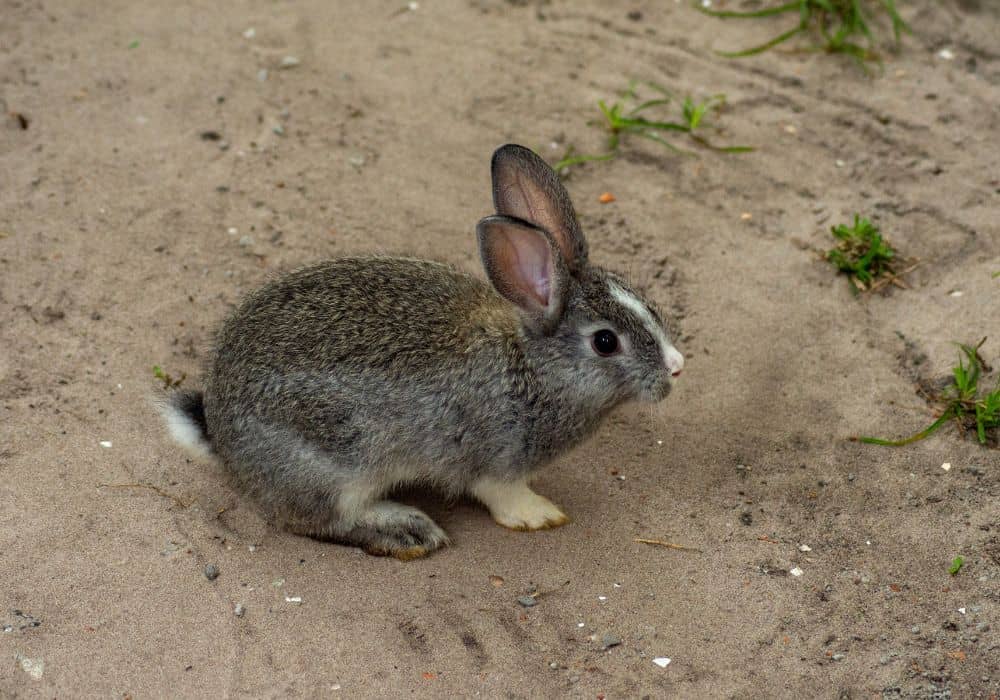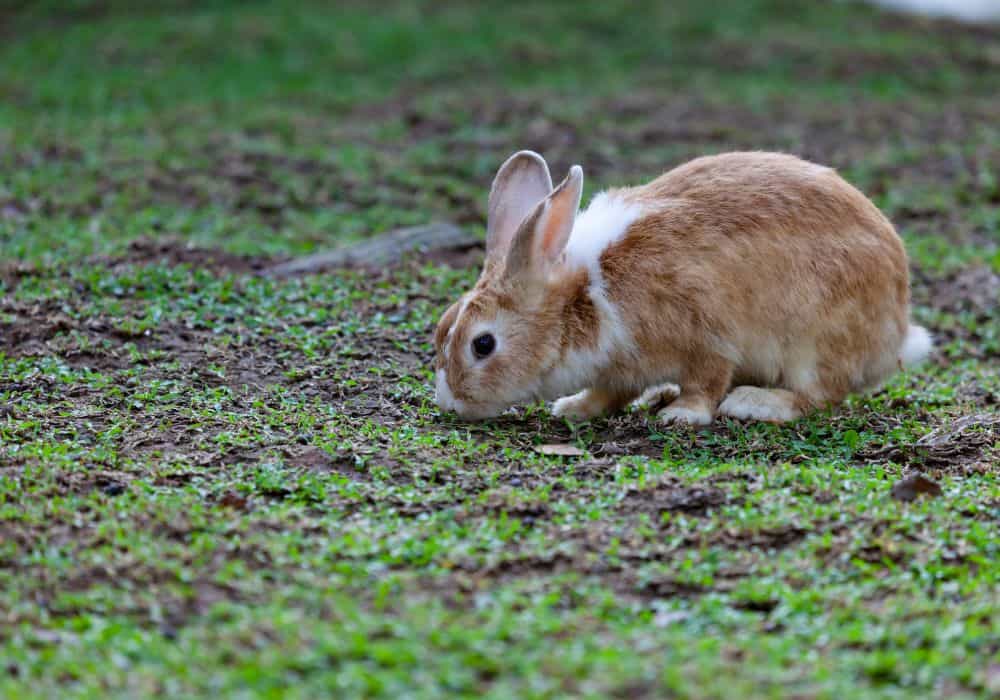They’re cute, they’re fluffy, and they’re the reason why Farmer McGregor didn’t want to have to deal with Peter Rabbit. They’re rabbits, and they might be adorable, but they are a menace to gardens everywhere.
Rabbits can be sweet pets, but they aren’t so cute when they eat your carefully-grown vegetation, leave piles of droppings on your pathways, and destroy your manicured lawn. Are you ready to get rid of those hippity-hoppity hares? Let’s talk about this…
9 Ways of Getting Rid OF Rabbits
1. Remove debris from your yard.
Debris is your number one enemy when it comes to pests of all kinds, including rabbits. Rabbits will use grass clippings and leaves as snacks. They also may find small shelters in empty logs or similar areas. A debris-free lawn is a happy, rabbit-free lawn.
A good rule of thumb is that you should try to mow your lawn at least once a week, followed up by a quick bagging of any clippings you may have. Shrubs and low-hanging bushes may need to be removed if your rabbit issue is out of control.
2. Remove potential nesting areas from your yard, too.
Along with raking leaves, you should consider removing the type of areas that rabbits use for cover—like shrubs, bushes, and areas where climbing ivy or crawler plants have taken hold.
If you see burrows or holes in your lawn, now would be a good time to fill them up. Rabbits won’t come back if they notice that their homes have been tampered with.
3. Fence in your yard.
A fence will stop most rabbits in their tracks, but regular fencing is only half the battle. You also have to keep rabbits from burrowing underneath your fence. Thankfully, this can be done fairly easily with chicken wire.
To prevent rabbits from burrowing underneath, dig a small trench under your fence and add a roll of chicken wire underneath. This will be enough to keep rabbits from digging under your fence in most cases. Some people also “double up” with gravel.
PRO TIP – If you notice rabbits burrowing and digging near trees, install a tree guard around each at-risk tree. You can also add some herbs that rabbits dislike if that is more of your style.
4. Create a rabbit repellent and use it throughout your yard.
Rabbits have incredibly acute senses of smell. They, like many other wild animals, will find scents that we enjoy to be quite off-putting. You can use this to your advantage. There are several quick recipes you can use, including:
- Dilute bleach with water. Very diluted bleach will be enough to dissuade bunnies and other pests from hopping around your yard.
- Garlic-hot pepper. Peel a clove of garlic and mince it. Add it to a handful of hot pepper and a bottle of dish soap, then add enough water to create a gallon of goods. Let it sit for two days, then spray the mixture all over your plants. Rabbits hate it, and it lasts for five days.
- Professional rabbit repellent. Many companies make highly effective repellent sprays, too. They tend to be a bit more expensive, but they are generally worth it. In many cases, they also have the perk of pushing away other animals (like deer or mice) away too.
- Linseed oil, detergent, and water. Something about the smell of linseed oil makes bunnies want to hop away from your yard.
- Irish Spring bar soap. Cut the soap and place them into breathable baggies, then place them on stakes near your garden. (Every five to 10 feet works well.) Animals hate the smell of this soap with a passion!
- Ammonia. Dip rags in ammonia and leave them underneath shrubs or trees for a fast and easy way to dissuade rodents from entering your yard.
5. Use the right fertilizer.
Believe it or not, there is something to be said about fertilizer choice when it comes to pest prevention. This is especially true for rabbits, since—you guessed it—they have powerful sniffers.
Rabbits greatly dislike the smell of two common fertilizers: bone meal and blood meal. Even people can find these two choices pungent. If you’re willing to deal with the mild stink, then you will be able to make your yard rabbit-free by using them.
The good side is that these are organic fertilizers. So, your garden will remain chemical-free.
6. Plant herbs and flowers that rabbits hate.
While many people prefer to spray a repellent to keep rabbits at bay, there are more natural methods that can be used to drive rabbits away. These are the more common plants you can use to keep bunnies away:
- Onions. Both onions and garlic have a scent that drives away rabbits as well as other pests. If you have issues with fleas, roaches, or other creepy crawlies, this can be a good choice.
- Sage. Whether it’s white sage or something a bit different doesn’t matter. Rabbits hate sages of all types.
- Lavender. Lavender’s potent smell can also drive away rabbits and other critters.
- Mint. Even having dried mint leaves can help dissuade rabbits from coming near your garden.
- Basil. Basil and oregano also tend to be disliked by rabbits. (Perhaps they just don’t like Italian cooking?)
- Asparagus. For reasons unknown, asparagus can be a good rabbit deterrent.
- Red Pepper. Yep. The spicy scent throws ‘em off quickly.
- Parsley. While it may taste great on potatoes to us, rabbits detest this aroma.
- Rhubarb. Not only is rhubarb a foul-smelling plant to bunnies, but it’s also poisonous to them.
- Tomatoes. The thorns on tomatoes tend to make this plant a deeply disliked choice for rabbits to eat.
- Hyssop. The classic herb also happens to be potent enough to keep bunnies at bay.
- Common Butterfly Bush. Though this does not have a really strong scent, rabbits seem to be repulsed by it. It also has the perk of bringing butterflies to your yard.
If you want to grow a food garden that features plants that rabbits enjoy, use a barrier of plants they dislike. The deterrent plants will help protect the plants you actually care about.
PRO TIP – A good way to ensure that rabbits don’t want to dine in your garden involves choosing thorny (or grey and fuzzy) plants. Rabbits hate spiky, fuzzy textures and won’t eat them. It reduces the food sources they have in your yard.
7. Trap and release.
The most ethical way to get rid of rabbits in your yard is to trap and release them elsewhere. Since rabbits can carry diseases, we suggest that you get a professional team to lay out rabbit traps. From there, they’ll send them off into the woods in a humane way.
You can usually call an ethical trapping and pest control company to make this happen. However, if you insist on trying to trap your own rabbits, you absolutely can. They sell roden traps at most Home Depot stores.
Live traps can take a while to work, so check daily for new rabbits. If you choose to release the rabbits, make sure to send them out at least five miles away from your home—ideally, in a wooded area. They like the woods.
If you want to go for a non-humane, “permanent solution” type of option, consider getting fast-acting instant-kill traps. They tend to be less painful than using poisoned rabbit bait, and also won’t harm the local environment as much.
8. Get some predators nearby.
If you’ve ever seen a rabbit in real life, you already know that these creatures don’t have many defenses to their name. They are very skittish creatures that typically run away the moment they see something come up near them.
Letting your dog hang out near rabbit burrows will be more than enough to make your pack of rabbits vanish. If that doesn’t work, you can add a faux owl on a tree branch to spook them away. This way, the bunnies aren’t actually in danger but they will still leave.
Cats also tend to be a great deterrent for rabbits. Chances are that you don’t have much of a rabbit problem if stray cats have been seen in your area. Of course, if you have an outdoor cat, just let Fluffy roam. Peter Cottontail will leave soon enough.
9. Consider calling up professionals.
If you find yourself surrounded by enough rabbits to stock a petting zoo, you might have a problem that’s too intense for your own DIY methods. That’s a sign that you may need to call professionals to figure out what is going on with your yard.

In conclusion…
Rabbits might be cute enough to be a cornerstone of pop culture, but they stop being cute when they’re eating your lettuce and tulips. Having a plan to create a garden that keeps bunnies at bay is the easiest way to make sure that you don’t end up with a colony of rabbits.
Whether it’s through planting herbs they hate, or even just getting fake owls, you can rearrange your yard in a way that makes the bunnies in your neighborhood choose a different venue.


